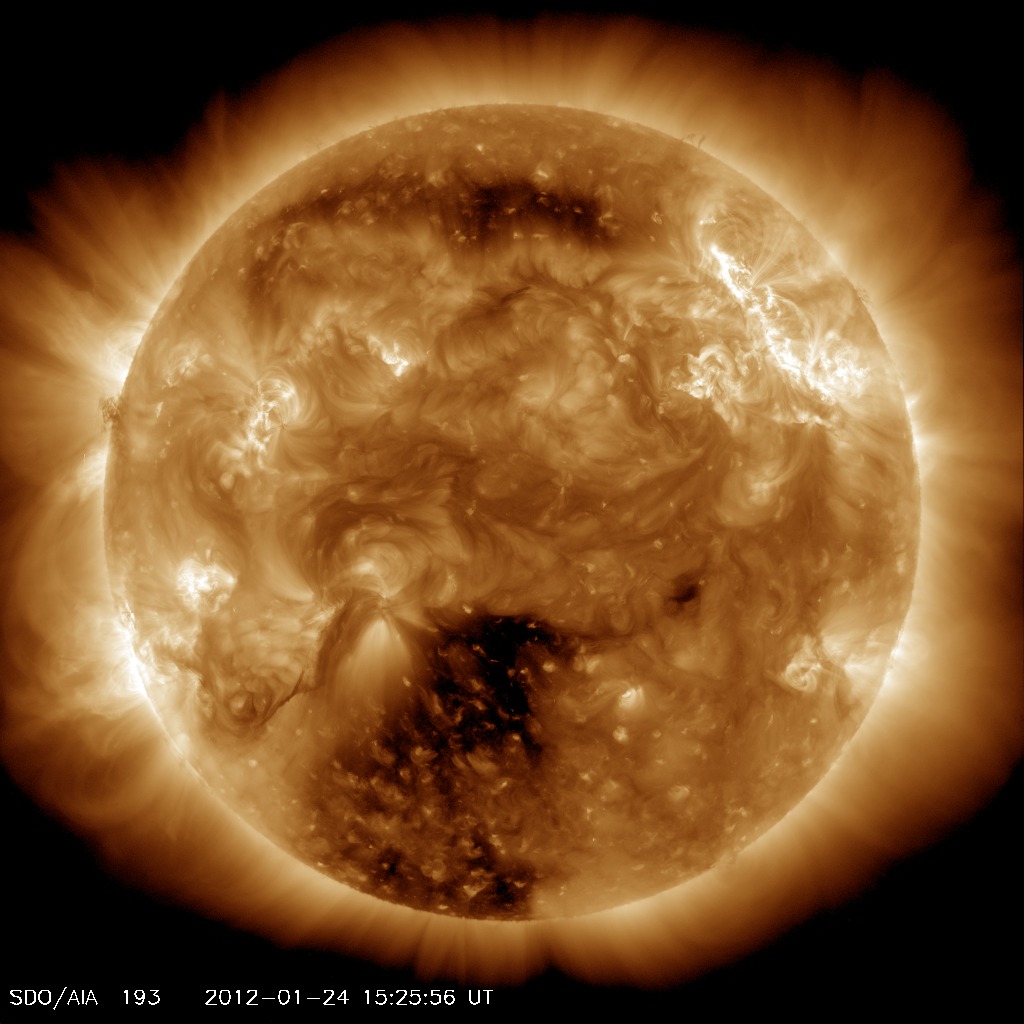Big Solar Storm Hits Earth --
(From THE WALL STREET JOURNAL)
By Robert Lee Hotz and Doug Cameron
The largest solar storm in almost a decade swept across Earth on Tuesday,
affecting air traffic across the North Pole and radio communications, in a
harbinger of fiercer outbursts from the Sun predicted for the year ahead,
federal experts said.
A solar eruption late Sunday launched a cosmic tsunami of energy, in the form
of charged particles, radio static and X-rays, across the 93 million miles to
Earth. It was the biggest burst of speeding particles since October 2003,
according to the National Oceanic and Atmospheric Administration's Space
Weather Prediction Center in Boulder, Colo.
CME IMPACT: As expected, a CME hit Earth's magnetic field on Jan. 24th at approximately 1500 UT (10 am EST). A G1-class geomagnetic storm is in progress now, producing brightauroras around the Arctic Circle. Sky watchers in Canada, Alaska, and states along the US-Canadian border should be alert for Northern Lights after nightfall. Tip: The hours around local midnight are often best for aurora sightings. Aurora alerts: text, voice.
In Lofoton, Norway, the CME's arrival produced a surge in ground currents outside the laboratory of Rob Stammes:

"The expected CME arrived and showed up on my instruments at 15.10 UTC--a fantastic shockwave followed by a magnetic storm," says Stammes. "This could be a happy day for many aurora watchers."
Indeed, the first auroras, post-impact, have been sighted in northern Europe. Antti Pietikäinen sends this picture from Muonio in the Finnish Lapland:

 |







